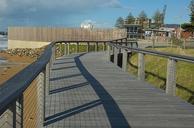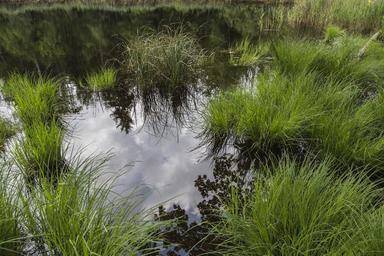Introduction
Art has always been a mirror that reflects society, culture, and the innate beauty of the world around us. Among the various forms of artistic expression, photography holds a unique place, allowing artists to capture fleeting moments in time. Nature-inspired art focuses on the breathtaking landscapes, intricate details of flora and fauna, and diverse ecosystems that exist outside our windows. This article delves into various aspects of nature-inspired photography, exploring its techniques, aesthetic trends, emotional reflections, and how it translates into home decor.
Nature-Inspired Art: Capturing the Beauty of the Outdoors through Photography
Nature-inspired art represents not just a genre but an ethos that encourages artists to draw inspiration from their surroundings. It urges photographers to step outside and engage with nature's raw beauty. The essence lies in capturing moments that can evoke emotions and provoke thoughts. Whether it’s a tranquil sunrise over rolling hills or vibrant wildflowers dancing in the breeze, these images tell stories rooted in nature.
Photography techniques play a significant role in this artistic pursuit. Understanding lighting conditions, composition rules, and camera settings is crucial for achieving those stunning shots that can captivate viewers. Moreover, integrating elements like abstract portraits or large canvases into nature-themed photography can enhance its appeal.
The Importance of Techniques in Nature Photography
Photography techniques are foundational for any photographer looking to master their craft. In nature photography, these techniques help articulate emotions and convey messages about our relationship with Earth.
- Lighting Conditions: Natural light varies throughout the day; golden hour (the hour after sunrise and before sunset) offers warm tones perfect for capturing landscapes. Composition Rules: Elements like leading lines, rule of thirds, and framing significantly impact how an image resonates with its audience. Equipment Choices: Investing in quality lenses can make a difference; wide-angle lenses work well for landscapes while macro lenses excel at capturing minute details.
Understanding these components allows photographers to create vibrant color compositions that resonate deeply with viewers.
Abstract Portraits: A Unique Fusion with Nature
While traditional nature photography often focuses on landscapes or wildlife, abstract portraits introduce an innovative angle by blending human subjects with natural elements. This approach creates visually engaging pieces that explore humanity's connection to the natural world.
- Emotional Reflection: Abstract portraits evoke feelings by intertwining human emotion with environmental elements—think of a person standing amidst towering trees or framed by blossoming flowers. Aesthetic Qualities: Such portraits often utilize soft focus or creative lighting to generate dreamy atmospheres that enhance emotional depth. Artistic Choices: Choosing specific colors or textures from nature can significantly influence how the subject is perceived within their environment.
This fusion makes abstract portraits an exciting avenue for exploration within nature-inspired art.
Exploring Linocut Printing Techniques
Once you have captured stunning photographs inspired by nature, consider taking your artistry further through linocut printing techniques. This printmaking method allows you to transform photographic images into tactile art forms.
What are Linocut Printing Techniques?
Linocut printing involves carving images into linoleum blocks before applying ink and pressing onto paper or fabric. Here’s why you might want to try it:
Tactile Experience: Unlike flat photographs, linocuts offer texture and depth.
Customizable Prints: Each print can vary slightly due to hand-crafted processes, making every piece unique.

Sustainable Art Form: Using eco-friendly materials contributes positively toward environmental preservation—a core tenet of nature-inspired art.
Thus, integrating linocut printing extends your creative reach while maintaining your connection to nature’s essence.
Woodblock Printing Techniques as a Complementary Art Form
Similar to linocutting but distinct in its approach is woodblock printing techniques—a traditional form dating back centuries yet remains relevant today for artists seeking authenticity in their work.
The Charm of Woodblock Printing
Woodblock printing offers several exciting elements:
Rich History: It connects modern artists to historical practices that celebrate craftsmanship.
Color Palette Interests: Artists can experiment with multiple woodblocks layered together for rich color palettes.
Visual Storytelling: Each print tells a story—often leveraging motifs found in nature—to engage viewers more profoundly than standard prints might achieve alone.
Aesthetic Trends in Nature-Inspired Art
Art continually evolves alongside cultural shifts; thus understanding current aesthetic trends is vital for any artist wishing to stay relevant.

Current Trends in Nature-Inspired Art
Some noteworthy trends include:
- Minimalism: Less is often more; minimalist decor emphasizes simplicity while allowing nature's beauty to shine without distraction. Eclectic Collections: Curating artworks from various styles creates personalized spaces reflecting individual tastes while celebrating diversity found in art inspired by nature. Vibrant Color Compositions: Bright hues derived from natural scenes can infuse energy into everyday spaces making them lively and inviting rather than mundane.
By aligning your work with these trends, you'll find broader audiences appreciating your artistic contributions!
Creating Inspired Home Decor Using Nature Photography
Home interior design transcends mere aesthetics; it fosters comfort and reflects personal identity through décor choices made within living spaces—including wall art photography!
How To Use Nature Photography as Decor
Here are some tips on integrating photography effectively:
Gallery Walls: Create dynamic gallery walls using framed photography—mixing sizes adds visual interest while showcasing varied themes inspired by outdoor experiences.
Large Canvases: Invest in large canvases featuring breathtaking landscapes as statement pieces—these create focal points within rooms!
Custom Wall Art: Consider commissioning custom pieces based on personal experiences immersed in natural settings; this brings added sentimentality into your space!
Thoughtful Artistic Displays That Enhance Mood
Capturing moments through photography goes beyond technique—it involves creating environments where those moments resonate emotionally! Thought-provoking imagery displayed thoughtfully enhances living spaces immeasurably!
Display Techniques That Work Wonders
Implementing creative display techniques ensures maximum impact:
Utilize shadows strategically when hanging artwork—this elevates visual storytelling!
Layer smaller artworks atop larger pieces creating depth!
Incorporate decorative art prints alongside functional items such as bookshelves fostering an organic atmosphere bridging practicality & beauty seamlessly!
FAQ Section
What is fine art photography?
Fine art photography refers specifically to photographs created according to the artist's vision rather than just documenting reality or events—in other words—a more expressive form focusing on aesthetics & themes conveyed through images themselves!
How does one create abstract portraits inspired by nature?
To create abstract portraits influenced by natural settings consider experimenting with unconventional angles which incorporate organic elements within compositions—allowing viewers’ interpretations while still resonating emotionally!
Why choose large canvases for displaying photos?
Large canvases serve as powerful focal points—they command attention & spark conversation among guests while providing immersive experiences reminiscent of being outdoors!
Can I use my own photographs for home decor?
Absolutely! Personalizing your space using photographs taken during adventures creates meaningful connections between memories captured & environments inhabited every day enhancing overall ambiance significantly!
What role does color palette play in design?
Colors evoke emotions influencing moods experienced within given spaces! Selecting harmonious palettes aligned with desired feelings helps establish atmospheres conducive relaxation creativity productivity etc., depending on intended function each room serves!
Are there specific photography techniques best suited for capturing outdoor scenes?
Certainly! Paying attention light conditions (golden hours), framing compositions strategically utilizing perspectives lead better results emphasizing allure found within outdoor environments beautifully depicted through lens artistry too!
Conclusion
In essence, "Nature-Inspired Art: Capturing the Beauty of the Outdoors through Photography" http://collectivethoughts613.raidersfanteamshop.com/combining-colors-and-textures-the-ultimate-guide-to-wall-art-harmony represents much more than just pictures; it embodies emotional connections we forge with our environment—a celebration itself! By employing various artistic choices—from advanced photographic techniques like linocut/woodblock printing methods exploring contemporary aesthetic trends—we enrich both ourselves & others around us evoking appreciation towards breathtaking wonders existing outside our doors daily! So grab your camera (or paintbrush), step outside—and let creativity flow freely amidst all-natural splendor awaiting discovery everywhere we look!